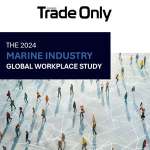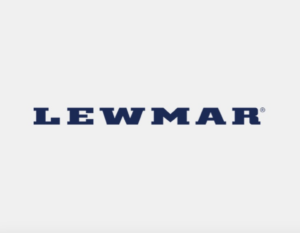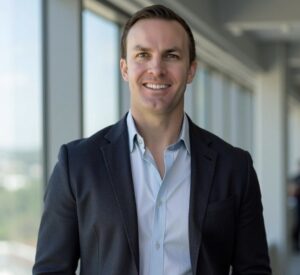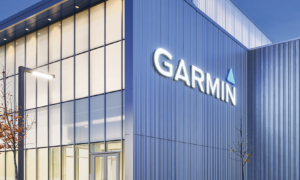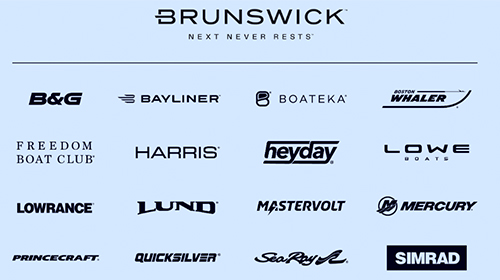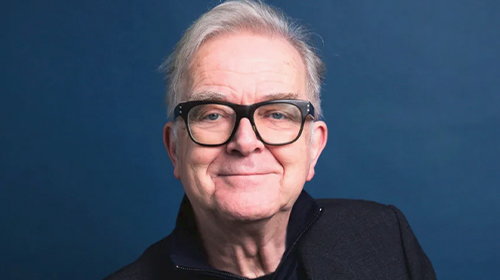
After divesting its well-known bowling, billiards and fitness brands, Mettawa, Ill.-based Brunswick Corp. emerged as a much more boating-focused conglomerate, with familiar brands including Sea Ray, Boston Whaler, Bayliner, Protector, Lowe Boats, Mercury Marine, Freedom Boat Club and a collection of components companies including Lowrance, Simrad, B&G, C-MAP, Mastervolt and many others. Since then, fresh leadership has immersed the company in technological innovations, not only in boatbuilding, but also upstream in propulsion, electronics and digital integration.
Two individuals spearheading this effort are David Foulkes, appointed CEO in 2019, and Alexandra Cattelan, who joined Brunswick as chief technology officer in spring 2022. Soundings Trade Only caught up with Foulkes and Cattelan in August at a media event in New York City, where Brunswick unveiled the Boston Whaler 280 Dauntless and demonstrated the Sea Ray SLX 260, the first Sea Ray developed by an all-women design team.
Foulkes and Cattelan recounted the run-up to products such as Mercury Marine’s 600-hp Verado V-12 in 2021, and the Avator electric outboard that is scheduled to start rolling out in 2023. They also outlined Brunswick’s philosophy and strategy for electric propulsion, and explained the rationale for combining Brunswick’s Navico, RELiON and Advanced Systems Group divisions under the Navico Group.
How does Brunswick nurture and develop a culture of innovation?
Foulkes: We are an innovative company, and I think we’ve continued to demonstrate that over time with great products, with new technologies that really serve the customer. Our objective is always not to implement technology for technology’s sake, but … to make sure that we’re adding value. We don’t expect that innovation is all going to come from inside the company, so we engage with a lot of partners. They can be academic partners, for example. We have the i-Jet research lab at the University of Illinois. But we engage with a lot of technology suppliers and other partners — Carnegie Robotics, for example — on some of our autonomy work. We try to build an ecosystem.

We also engage a lot with early-stage companies. We have investments in a whole portfolio of early-stage companies, trying to understand from them what technology is emerging and how we can leverage them. I would say also that innovation doesn’t just need to be technological innovation. I think there are opportunities for business-model innovation. The Freedom Boat Club is that kind of example, where you find a way to get more people on the water, engage in a different demographic, maybe engage people who wouldn’t otherwise have been on the water.
And then you’ve seen us stand up a preowned boat, digital-sales platform Boateka, trying to find a way to use digital platforms to enhance the boat sales process. So I think we take a very wide-ranging view of innovation from technology to business model. We take a very consumer-centric view of it inside the company, but engaging with a lot of other minds outside the company.
The 600-hp, V-12 Mercury Verado outboard was a bold statement. Can you tell us about that product’s development?
Foulkes: There’s a lot of innovative technology in that 600-hp engine, so it takes a little bit longer to introduce that. I think the 600 was about a five-year program from start to finish. And we started again with this consumer-centric approach, not just adding technology for technology’s sake.

[It’s the] first outboard with an integrated automatic transmission. Obviously, that helps performance but also helps fuel economy. First gear gets you really rapid acceleration. Second gear gets you into a state where your fuel economy is improved. And CO2 emissions, by the way, are improved. Another big element of the technology is the steerable gearcase. It’s very unusual in that the outboard is in fixed position on the transom. There are a couple of reasons for doing that. One is, it means that you can mount the engines quite close together, even though they’re large engines. Often, people want to get two or three or even four or more of those engines on the back of a transom. If you want spacing for those engines that’s close to a conventional outboard, you need to keep the top of the engine static and adjust the gearcase.
Most recently, we’ve been introducing these hatches, or flip-tops, on the cowling on our outboards that allow you to service the product without removing the top cowl, which can be cumbersome on a boat when you have to lean over. Thinking about what a customer needs to service our product leads us to some of these unique service and maintenance solutions as well.
Where do you see the next big disruptive innovation in the recreational marine industry coming from?
Foulkes: Obviously, electrification is making its way into marine. It’s more of a challenge in marine than it is in light-duty road vehicles because you need a lot more power to move a boat. Boats are very weight-sensitive, and we don’t have brakes to regenerate energy. Nevertheless, we’re introducing a range of modest-horsepower electric outboards called the Avator with orders beginning at the end of this year and launching in 2023. We expect them to be very robust and reliable, very quiet, very powerful, very easy to use, I think intuitive, and be connected products so that you can update them.
Connectivity has become a big part of marine already. Some of the products … come with apps that allow you to monitor the boat, with security features that allow you to switch on and off devices on the boat. And we think autonomy will make its way into marine. The objective is a bit different in recreational marine. In vehicles, autonomy is designed to separate the driver from the driving experience. But in recreational marine, part of the fun of being on a boat is operating the boat, so we don’t want to detach the operator or the captain. What we do want to do is try and help them in stressful situations like docking or some maneuvering situations.
Why focus on small electric outboards when other companies are developing larger electric outboards?
Foulkes: It really depends on what your objectives are, I think. There is a real significant market for small outboards in Europe of tens of thousands of units that already exist, and it’s mostly on regulated lakes. If you really want a boat that has modest range requirements or modest performance requirements, a small outboard does fine, and it remains fairly affordable.
As you go to higher power requirements, there are a lot of other considerations. The reality is that even the most advanced electric technology at the moment, it has very significant range limitations. It’s not difficult to build a high-power electric product for marine. It’s difficult to get a product that satisfies the customer needs for range and performance and cost, so you’ll find some products in the market right now that are available, but they cost $300,000.
Brunswick just combined Navico and the Advanced Systems Group into a single division. Why?
Foulkes: Our legacy Advanced Systems Group was really born from a whole sequence of acquisitions all the way back from the Attwood group of companies and Whaler. We acquired Power Products in 2018 and all of its companies, like Mastervolt and CZone and Marinco. And then, last year, we acquired the Navico Group with its leading brands Lowrance, Simrad, B&G and C-MAP, and also RELiON, another lithium-ion company. The big advantage we have is not just to offer all of those products separately. It’s to offer them in an integrated way to an OEM customer, for example, so that instead of them buying a lot of individual products, they all have to connect together and work together. We provide that integrated solution for them.
How does your experience in aerospace, energy and automotive help you in the marine industry?
Foulkes: I’m an aerospace engineer by education, so I started my career designing advanced fighter aircraft wings. I then spent some time in the oil industry. And then the bulk of my career, as you mentioned, is in automotive with Ford Motor Co. I did a lot of roles there, mostly in engineering product developments. I was a vehicle chief engineer, a power plant chief engineer and a vehicle design director. I think the automotive industry forces you to understand how to engineer innovative solutions at scale that can be manufactured at scale with very high levels of reliability and consistency. It also helps you understand how to manage complex products and projects, not just from an engineering perspective, but engineering, manufacturing, supply chain, marketing and how to get the best out of that integrated set of disciplines. I think it’s a great proving ground, particularly since a lot of the technological and manufacturing solutions that had been used in automotive are now being deployed in marine.
Speaking of supply chain, is availability of components getting any better?
Foulkes: It is getting better. I’d have to say in aggregate, the supply-chain situation is improved. We still have some residual issues that we’re managing, and in some cases, they’re more difficult than others, but I’d say they’ve become a bit more isolated and discrete as opposed to just the barrage of issues that we faced maybe six months to a year ago.
Alex Cattelan arrived at Brunswick this year after distinguished stints at General Motors, Fiat Chrysler (now Stellantis) and, most recently, Polaris. She contributed her own observations about Brunswick’s foray into electric propulsion, building her technology team and the outlook for systems integration in recreational boating.
Your background is in propulsion and electric propulsion, right?
Cattelan: In electric propulsion, I actually started at General Motors in 2005. I was brought in from GM in Canada, where I’d been working on natural gas and propane and fuel cells. I got brought into the U.S. to start working with the electric propulsion team, first on the vehicle side. Then it really culminated to being the assistant chief engineer on the Chevy Volt powertrain, where we took high-voltage systems and high-voltage lithium-ion for the first time at General Motors into a commercial application.
How does your experience in automotive overlap with marine?
Cattelan: I always look at automotive and aerospace as having, because of the significant investment in new-product development, a lot of advanced capabilities in doing product development.
Building a car is a very, very complex process, bringing a ton of systems together, working across a matrixed organization with suppliers with partners. So that requires you to be able to be efficient and effective at every step of the way to reduce the amount of time it takes to develop the product and the investment. Bringing some of those technologies into other areas like in boating — and previously, I spent four years in the powersports industry — there’s a lot of opportunity for those technologies to enhance the innovation cycle, the learning cycle and the organizational agility.
Marine is very different at the same time. This is a good learning opportunity for me to understand the effect of the marine environment on the product, how to best optimize the system for a marine environment.
What factors specific to boatbuilding have caught your attention?
Cattelan: It’s water and salt. Galvanic corrosion is another area. And then impact loads. I worked at Polaris, where we had motorcycles and we had four-wheel products that would bounce 20 feet off the Earth and land back down. There’s a lot you have to do on impact loads there.
There is a lot on boats, if you think about boats as they broach waves and then come back into contact. So there’s a lot of
different things that we have to think about in that product development. And that’s where we shine as an organization. We have all the pieces of the puzzle in the Brunswick corporation [including] Mercury Marine, who has been doing for 50 years the development of propulsion systems in a marine environment.
We’ve [also] got Navico Group who does a lot of our digital electronics, our display systems, digital systems, connected systems, mapping, radar, etc. And then you’ve got our boat group who has all of the expertise to help us integrate this into boats. So we are uniquely positioned, I think, to bring technology that has already in some cases been developed and integrate it appropriately for the marine environment.
How do you see the integration of Navico and the Advanced Systems Group playing out?
Cattelan: Navico brings a whole lot to our portfolio, from mapping systems, radar systems, navigation systems — actually, ASG had a broad portfolio of electronic systems, as well. There’s a lot of digital on the ASG [side]. So if you bring all of this together and look at the future potentially of boating where there will be a lot more digital integration, Navico is clearly a winner for us in terms of being able to bring the full portfolio and product together.
In electric propulsion, why is Brunswick focusing on low-horsepower products?
Cattelan: We are working on low-horsepower first, and that’s where we believe most customers will leverage electric product. We are building the Avator series, which we expect releases starting this year out into 2023. There’ll be multiple releases of the product. Those are 48-volt systems because you don’t need high voltage. Because they’re 48-volt systems, they’re safer to the customer. That’s where we see the market taking shape, especially in Europe, but also here for light fishing applications and other smaller-boat series. Of course we’re going to continue to explore high-horsepower and high-voltage systems, and in fact are working in the background on some of that.
How many people report to you, and what has the team-building been like so far?
Cattelan: In the CTO role, I have a lot of indirect relationships with the engineering organizations and divisions. I have a quite small team, actually, around 40, 50 people, including our university team in the University of Illinois. We have brought in a lot of senior-level expertise in the areas that we are focused on: autonomy systems, controls and connected systems, and electrification. We have brought in people from the agriculture industry, automotive industry and other industries to really be on the forefront.
In the next two or three years, what breakthroughs do you envision?
Cattelan: The integration of digital systems, infotainment systems, sensors to not necessarily always do full autonomy but to help you understand the environment around you, whether it’s mapping sea level, obstacle detection. Electrification will enhance what we already have as a propulsion portfolio and likely attract new customers into boating. And there’s a lot of work being done on things that we don’t talk about in materials, recycling, lightweighting, things that help us really create a more sustainable boating experience. We are leveraging electrification in an energy-storage capacity.
This article was originally published in the October 2022 issue.

